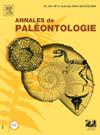Microbialites diversity from the Ediacaran of the Anti-Atlas (Morocco): A snapshot of microbial oases thriving in an alkaline volcanic lake
Abstract
The Moroccan Anti-Atlas belt preserves an exceptional record of an Ediacaran microbial biosphere. The Amane Tazgart Formation of the Ouarzazate Group corresponds to an Ediacaran volcanic alkaline lake depositional system (ca. 571 Ma) where microbial buildups accreted in an extreme environment. These microbial accumulations are exceptional not only for their diverse range of extreme conditions but also for their significance in understanding the early biosphere and earth's habitability. A description of these buildups provides insights into their Spatio-temporal distribution. The lower part consists of thrombolitic limestones, usually displaying irregular to patchy mesoclots, associated with composite and stromatolitic buildups. The upper part dominated by clastic stromatolites exhibits a variety of morphotypes ranging vertically from planar wrinkly laminated to large domes. The transitional morphotypes are made of linked and vertically oriented or inclined columns, grading upward to cone-shaped domes. The increase in laminated fabrics and the decrease in clotted fabrics toward the top of the section indicate that environmental conditions were likely suitable for coexisting both fabrics during microbial carbonate accretion. The demise of carbonate production at the late stage coincides with riverine input of clastic sediments, subsequently followed during low sediment input by growth of siliciclastic stromatolites.

 求助内容:
求助内容: 应助结果提醒方式:
应助结果提醒方式:


